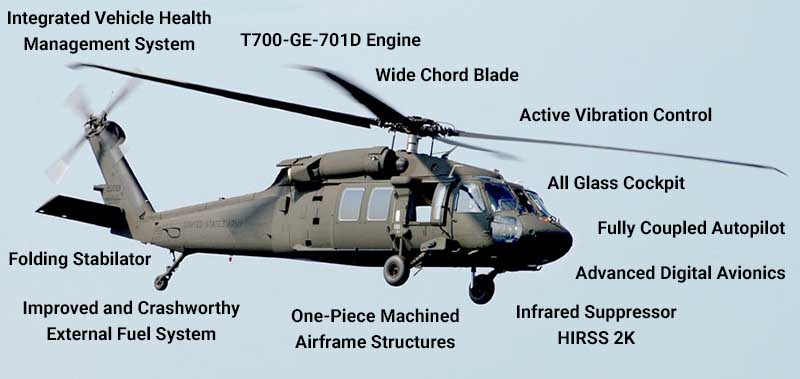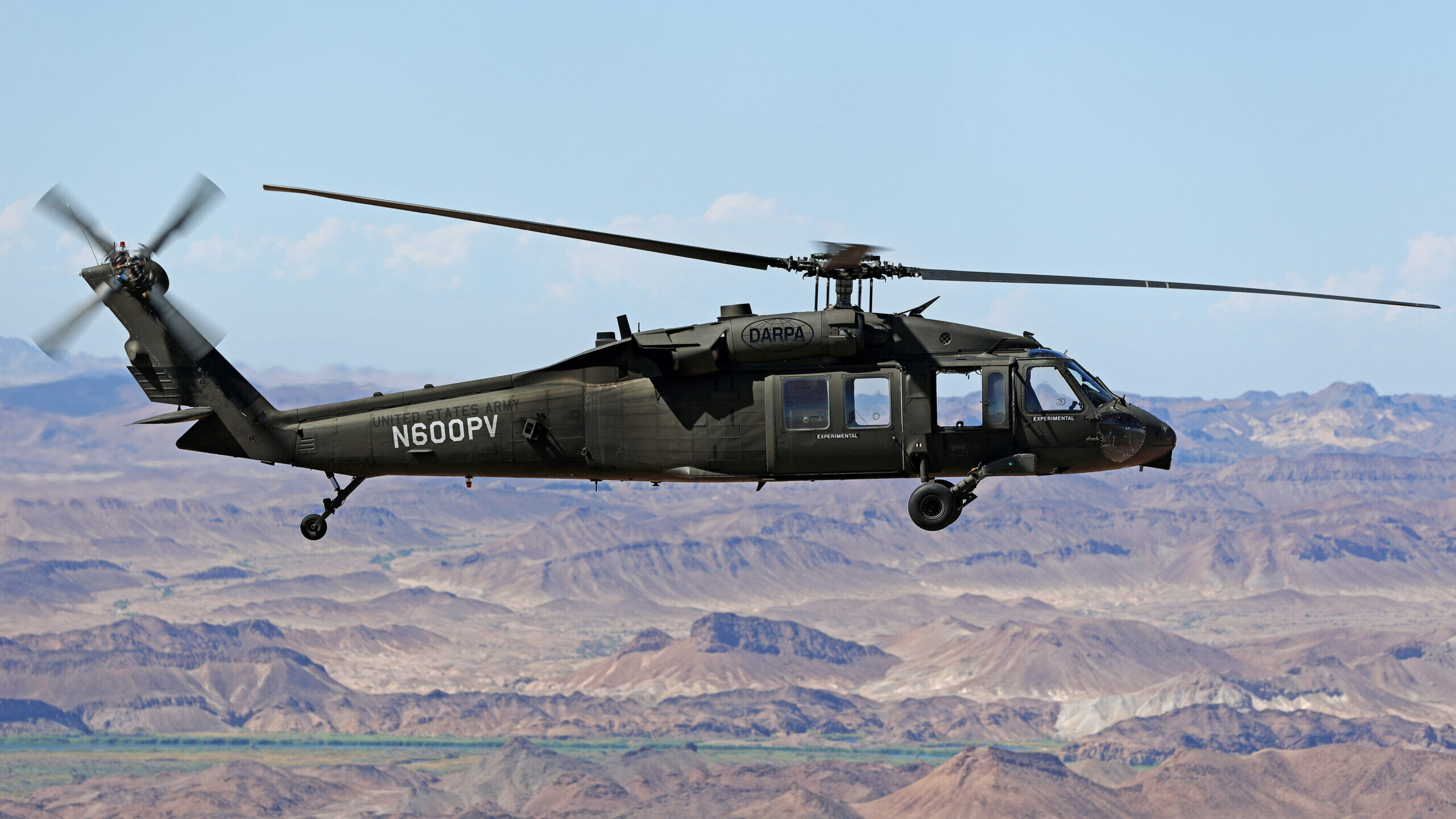Exactly how the UH 60 Reinvented Military Aviation and Fight Workflow
Exactly how the UH 60 Reinvented Military Aviation and Fight Workflow
Blog Article
UH-60: Innovations in Modern Helicopter Layout
The UH-60 helicopter stands as a criteria in contemporary air travel, showcasing substantial innovations in design and innovation that cater to the evolving needs of army procedures. As we check out the evolution and crucial developments of the UH-60, it becomes vital to take into consideration how these developments influence not only present applications however likewise the future landscape of helicopter design.

Development of the UH-60
The evolution of the UH-60 Black Hawk helicopter represents a considerable landmark in aerospace engineering and army air travel. Presented in the late 1970s, the UH-60 was developed by Sikorsky Aircraft to fulfill the USA Military's requirement for a functional utility helicopter with the ability of executing a selection of objectives. Its design emphasized ability to move, rate, and sturdiness, establishing new criteria for functional performance.
The UH-60 features a distinctive four-blade blades system, which improves lift and stability, enabling it to operate properly in varied settings. Its airframe is constructed from innovative composite products, adding to a decrease in weight while maintaining architectural honesty. The helicopter's layout additionally integrates enhanced aerodynamics, which enhances gas performance and enhances range.
Over the years, the Black Hawk has actually undergone multiple upgrades to boost its abilities, including enhanced engines, advanced trip control systems, and modular systems for very easy upkeep and flexibility. The helicopter's capability to carry out goals ranging from troop transport to medical discharge has solidified its function as a foundation of U.S. armed forces procedures. The UH-60 Black Hawk stays an archetype of exactly how advancement in helicopter style can significantly impact army performance and operational flexibility.
Advanced Avionics Solutions
Innovations in avionics systems have changed the capacities of modern-day helicopters like the UH-60 Black Hawk, enhancing functional effectiveness and situational understanding (UH 60). The combination of advanced avionics permits improved interaction, navigating, and flight administration, making the UH-60 extra flexible in varied mission profiles
Among the essential attributes is the advanced electronic cockpit, which employs multifunction screens that offer real-time information, making sure pilots have instant access to critical trip details. This streamlining of info decreases pilot work and improves decision-making procedures throughout complex procedures. In addition, the incorporation of GPS and inertial navigating systems makes it possible for accurate positioning and path planning, enhancing objective implementation in challenging atmospheres.
Moreover, advanced avionics systems boost interaction capabilities via safe information web links and voice interaction systems, permitting seamless sychronisation with ground forces and other aircraft. The integration of automatic flight control systems further adds to boosted security and control, especially in negative weather or throughout low-altitude maneuvers.
Engine and Performance Enhancements
Engine performance in modern helicopters has taken a considerable jump ahead, driven by developments that improve reliability, power, and efficiency. At the forefront of these improvements is the adoption of more powerful turboshaft engines, specifically those employing sophisticated products and technologies that enable greater temperature resistances and increased thrust abilities. The UH-60 Black Hawk, for example, uses the T700-GE-701C engine, which includes a dual-channel, full-authority digital engine control system. This system boosts efficiency while optimizing gas usage and minimizing maintenance requirements.
In addition, the assimilation of engine wellness monitoring systems permits real-time diagnostics and anticipating maintenance, considerably enhancing functional integrity. These systems not only sharp teams to possible problems before they come to be crucial yet also help with more reliable upkeep scheduling, therefore decreasing downtime.

Materials and Structural Innovations
Current advancements in products and architectural layout have revolutionized modern-day helicopter building, boosting both performance and longevity. The intro of sophisticated composite materials, such as carbon fiber enhanced polymers, has actually considerably decreased weight while preserving structural honesty. This shift not only boosts gas efficiency however additionally enhances haul capacity, enabling helicopters like the UH-60 to do even more varied goals.
In addition, developments in aluminum alloys and titanium components have added to improved resistance to corrosion and tiredness, prolonging the life-span of essential airframe elements. The critical usage of these materials has led to a reduction in upkeep needs and boosted total functional preparedness.

Moreover, the integration of computer-aided design (CAD) and additive manufacturing innovations has enabled a lot more lightweight frameworks and intricate geometries, maximizing the wind resistant efficiency of helicopter styles. These developments promote quick prototyping and production, permitting suppliers to respond swiftly to developing mission needs.
Security and Survivability Functions
Safety and security and survivability functions in modern-day helicopter design have ended up being paramount, mirroring the increasing needs for goal effectiveness in challenging atmospheres. The UH-60 Black Hawk, a remarkable instance, integrates advanced technologies to improve staff and passenger defense. Among one of the most critical improvements is the incorporation of crashworthy gas systems made to lessen the risk of fire throughout influence. Additionally, the airframe is created with strengthened products that take in and dissipate energy, more protecting passengers in the event of a crash.
The helicopter also uses a ballistic protection system, that includes armored staff seats and crucial systems shielding, minimizing susceptability to little arms fire and shrapnel. Enhanced situational awareness is achieved via sophisticated avionics and sensor innovations, permitting pilots to detect and avoid dangers effectively.
Additionally, the combination of redundancy in important systems-- Clicking Here such as double engines and multiple trip control channels-- ensures ongoing procedure also if one system fails. The UH-60 is geared up with sophisticated emergency situation flotation protection tools, boosting survivability in water landings. Jointly, these functions not just improve the security of workers however additionally boost goal success rates in hostile settings, demonstrating the dedication to quality in helicopter design.
Conclusion
The UH-60 helicopter stands for a substantial innovation in contemporary aviation modern technology, integrating innovative materials, sophisticated avionics, and robust safety and security functions. Its advancement reflects a dedication to enhancing performance and functional effectiveness while ensuring pilot and staff survivability. The combination of lightweight composites and progressed navigation systems emphasizes the helicopter's versatility in various armed forces missions. Generally, the UH-60 works as a benchmark for future advancements in helicopter layout, embodying durability and convenience in contemporary military operations.
The UH-60 helicopter stands as a criteria in contemporary aeronautics, showcasing considerable improvements in style and technology that cater to the advancing demands of military operations. As we check out the advancement and essential advancements of the UH-60, it comes to be crucial to take into consideration just how these growths affect not just current applications yet additionally the future landscape of helicopter layout.
Presented in the late 1970s, the UH-60 was created by Sikorsky Aircraft to meet the United States Military's demand for a flexible energy helicopter qualified of performing a variety of objectives. The UH-60 Black Hawk stays a prime example of just how advancement in helicopter design can considerably affect army performance and functional look at this site versatility.
Generally, the UH-60 serves as a standard for future growths in helicopter style, embodying strength and adaptability in contemporary army procedures.
Report this page